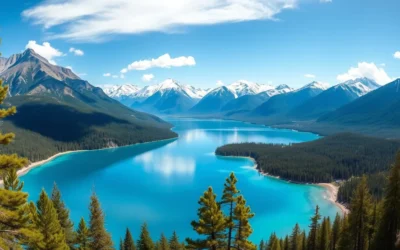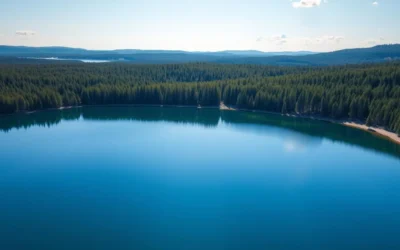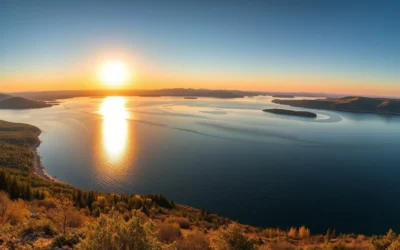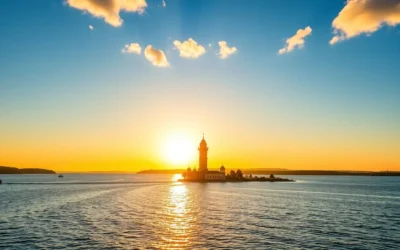Did you know that Kodar National Park is home to Russia’s southernmost glaciers? This remote wilderness area contains 39 active glaciers outside the Arctic Circle – a geographical anomaly that draws scientists and adventurers alike to this pristine corner of Siberia. Established in 2018, this 491,700-hectare natural wonderland represents one of Russia’s newest and most untamed national parks.
Getting There & Planning Your Journey
Reaching Kodar National Park requires determination and careful planning, as it’s located in one of Russia’s most remote regions. The journey itself is part of the adventure, taking you through the heart of Siberia to a wilderness few international travelers ever experience.

Transportation Options
The most reliable way to reach Kodar National Park is via the Baikal-Amur Mainline (BAM) railway. The nearest settlements are:
- Novaya Chara – The primary gateway to the park
- Chara village – A smaller settlement with basic amenities
Long-distance trains that service this route include:
- Train No. 75/76 Moscow – Tynda (runs every other day)
- Train No. 97/98 Kislovodsk – Tynda (runs twice weekly)
From Moscow, the journey takes approximately 4-5 days by train. Alternatively, you can:
- Fly to Chita (the regional capital) and then take a connecting flight or train
- Fly to Irkutsk and connect to the BAM railway
Ready to Start Your Kodar Adventure?
Book your flights to Russia and begin your journey to one of the world’s last true wilderness areas.
Required Permits
As with many Russian national parks, visitors need permits to enter Kodar National Park. These can be obtained through:
- The official park website: https://npkodar.ru
- Local tour operators in Chara or Novaya Chara
- The park administration office in Novaya Chara
It’s highly recommended to arrange permits at least 2-3 weeks in advance, especially during the peak summer season.
Best Time to Visit Kodar National Park
The extreme continental climate of Kodar National Park creates distinct seasons with dramatic temperature variations. Choosing the right time to visit is crucial for both safety and enjoyment.

Recommended Seasons
Summer (July-August)
The optimal time to visit Kodar National Park is during the brief summer season. Advantages include:
- Temperatures between 13°C and 20°C (55-68°F)
- Most hiking trails are accessible
- Alpine meadows in full bloom
- Longer daylight hours (up to 18 hours)
- Minimal snow at lower elevations
Early Autumn (September)
Early September can also be pleasant with:
- Beautiful fall colors in the taiga forest
- Fewer insects than summer
- Temperatures around 5-15°C (41-59°F)
- Clearer skies for photography
- Less crowded trails
Seasons to Avoid
Winter (November-March)
Winter in Kodar is extremely harsh:
- Temperatures plummet to -37°C (-35°F) or lower
- Record lows of -64°C (-83°F) have been recorded
- Heavy snowfall blocks most trails
- Limited daylight (as little as 6 hours)
- Most facilities close for the season
Spring (April-June)
Spring presents significant challenges:
- Unpredictable weather conditions
- Snowmelt creates muddy, impassable trails
- Rivers swell with meltwater, making crossings dangerous
- Many lakes remain frozen until June
- Abundant mosquitoes and biting insects emerge
Weather Warning: Even during summer, weather in Kodar National Park can change rapidly. Always pack layers, waterproof clothing, and be prepared for sudden temperature drops, especially at higher elevations.
Getting Around Locally
Navigating within Kodar National Park presents unique challenges due to its remote location and limited infrastructure. Most exploration requires a combination of vehicle transport and hiking.

Local Transportation Options
- Off-road vehicles: UAZ jeeps and other all-terrain vehicles can be hired in Novaya Chara for transport to trailheads
- Local trains: The Novaya Chara – Severobaikalsk train and commuter trains to Kuanda and Khani can be used to access different parts of the park
- Hiking: Once at trailheads, exploration is primarily on foot
- River transport: Some areas are accessible via boats on the Chara and Vitim rivers during summer
Key Routes Within the Park
The park is divided into three main sections based on accessibility and terrain:
- Western Kodar: The least explored region, suitable for experienced wilderness trekkers
- Central Kodar: Contains the most popular hiking routes and the Marble Gorge
- Eastern Kodar: Features more accessible trails and is popular for day hikes
A dirt road follows the Middle Sakukan River for approximately 26 km from Chara Village to the entrance of the Marble Gorge. Beyond this point, only hiking trails exist.
Need Transportation in Russia?
Rent a vehicle suitable for the challenging terrain around Kodar National Park.
Local Tip: Hiring a local guide is highly recommended, especially for first-time visitors. Guides can be arranged through the park administration or tour operators in Novaya Chara.
Where to Stay
Accommodation options in and around Kodar National Park are limited but sufficient for adventurous travelers. Most visitors base themselves in nearby settlements and make day trips or multi-day treks into the park.

Accommodation in Nearby Settlements
Novaya Chara
This railway junction town offers the most reliable accommodation options:
- Hotel BAM: Basic but clean rooms with private bathrooms
- Guesthouse Kodar: Family-run accommodation with home-cooked meals
- Railway Hotel: Simple rooms near the train station
Chara Village
This smaller settlement offers:
- Homestays: Several local families offer rooms to travelers
- Tourist Base Chara: Basic cabins with shared facilities
- Park Ranger Station: Occasionally offers basic accommodation for visitors
Accommodation Within the Park
Within Kodar National Park itself, accommodation options are primitive:
- Camping: The primary option for overnight stays within the park
- Mountain huts: A few basic shelters exist on popular trekking routes
- Ranger cabins: Occasionally available for emergency use only
Important: There are no hotels, lodges, or developed camping facilities within the park boundaries. All visitors must be self-sufficient with proper camping equipment.
Camping Considerations
If planning to camp within the park:
- Bring a four-season tent capable of withstanding strong winds
- Pack a sleeping bag rated for temperatures below freezing, even in summer
- Use a sleeping pad with good insulation from the ground
- Practice Leave No Trace principles – pack out all waste
- Camp at least 100 meters from water sources
- Be aware of wildlife, including bears that inhabit the region
Find Accommodation Near Kodar National Park
Book your stay in Novaya Chara or other nearby settlements before your adventure.
Dining & Local Cuisine
The remote location of Kodar National Park means dining options are limited but authentic. The local cuisine reflects the harsh climate and traditional subsistence practices of Siberia and the indigenous Evenk people.

Dining in Nearby Settlements
Novaya Chara
The town offers several basic dining options:
- Café BAM: Simple Russian cuisine and daily specials
- Stolovaya (cafeteria): Inexpensive, hearty meals popular with locals
- Railway Station Café: Basic meals and snacks for travelers
Chara Village
Dining options are more limited:
- Local homestays: Often provide home-cooked meals for guests
- Small grocery store: Basic supplies for self-catering
- Seasonal market: Local produce and products (summer only)
Local Specialties to Try
The regional cuisine features ingredients from the taiga forest and local waters:
- Ukha: Traditional fish soup made with local river fish
- Stroganina: Thin slices of frozen raw fish or meat, a Siberian delicacy
- Pelmeni: Siberian dumplings filled with game meat
- Taiga berries: Seasonal wild berries including cloudberries, lingonberries, and blueberries
- Cedar nuts: Pine nuts harvested from Siberian cedar trees
- Game meats: Dishes prepared with elk, deer, or other local game
- Bread: Hearty, dark Russian bread is a staple with every meal
Self-Catering for Park Visits
Most visitors to Kodar National Park need to be self-sufficient with food:
- Stock up on supplies in Chita before traveling to the park region
- Purchase additional supplies in Novaya Chara or Chara Village
- Bring lightweight, high-calorie foods suitable for trekking
- Pack a portable stove and fuel for cooking
- Bring water purification methods (filters or tablets)
Cultural Tip: If invited to a local home for a meal, it’s customary to bring a small gift like chocolates or tea. Sharing a meal is an important cultural tradition in Siberia.
Attractions, Sightseeing & Activities
Kodar National Park offers a remarkable diversity of natural attractions, from alpine glaciers to desert sands, creating a landscape of striking contrasts and unique ecological features.

Natural Highlights
Glaciers
Kodar National Park contains 39 active glaciers – the southernmost in Russia:
- Sygykta Glacier: The largest in the park
- Azarova Glacier: Known for its distinctive blue ice formations
- Peretolchina Glacier: Named after the explorer who first documented it
Lakes and Rivers
The park contains over 570 alpine lakes:
- Lake Nichatka: The largest lake in the park
- Lake Leprindo: Known for its crystal-clear waters
- The Chara River: The main waterway through the region
Unique Geological Features

Chara Sands
One of the park’s most unusual features is a small desert surrounded by taiga forest:
- 45 square kilometers of sand dunes
- Dunes reach heights of up to 80 meters
- Created by ancient glacial lake sediments
- Contains small oasis lakes including Lake Alyonushka
Marble Gorge
A dramatic canyon with distinctive geological features:
- Steep marble walls with unique striations
- Site of a former uranium mine from the Stalin era
- Historical remnants of the Borlag labor camp
- Accessible via a 26 km trail from Chara Village
Mountain Peaks
The Kodar Range features numerous impressive peaks:
- BAM Peak (3,073 m): The highest point in Zabaykalsky Krai
- Pik Muskunnakh (2,905 m): Offers panoramic views of the surrounding ranges
- Pik Skalisty (2,519 m): Known for its dramatic rock formations
Explore Kodar’s Natural Wonders
Book guided tours to experience the park’s most spectacular attractions safely.
Cultural Heritage & Historical Sites
Beyond its natural wonders, Kodar National Park preserves significant cultural and historical heritage, from ancient indigenous sites to Soviet-era industrial remnants.

Indigenous Heritage
The Kodar region has been home to indigenous peoples for millennia:
- Evenk culture: The primary indigenous group of the region
- Ancient rock art: Petroglyphs dating back thousands of years
- Traditional hunting grounds: Areas still used by indigenous communities
- Sacred sites: Mountains and lakes considered spiritually significant
Archaeological evidence suggests nomadic tribes have inhabited this region for over 150,000 years, maintaining traditional practices in harmony with the harsh environment.
Soviet History

The Soviet period left significant marks on the landscape:
- Borlag labor camp: A Stalin-era gulag where prisoners mined uranium
- Uranium mine: Operated from 1949-1951 before being abandoned as commercially unfeasible
- BAM railway: The Baikal-Amur Mainline railway construction opened up the region
- Soviet settlements: Created to support mining and railway development
Historical Note: The Marble Gorge uranium mine was part of the Soviet atomic bomb program. Today, guided tours allow visitors to explore the abandoned mine structures and learn about this dark chapter in the region’s history.
Local Communities
Contemporary communities around the park maintain unique cultural traditions:
- Chara Village: A traditional settlement with preserved local customs
- Novaya Chara: Developed during the BAM railway construction
- Seasonal celebrations: Traditional festivals marking seasonal changes
- Crafts and skills: Local artisans creating traditional items
Outdoor Adventures & Activities
Kodar National Park is a paradise for outdoor enthusiasts seeking wilderness experiences in one of Russia’s most remote and pristine environments. The park offers activities ranging from moderate day hikes to challenging multi-day expeditions.

Hiking & Trekking
The park offers numerous hiking routes of varying difficulty:
Popular Day Hikes
- Chara Sands Trail: 5 km loop through the desert landscape
- Lake Alyonushka: 3 km trail to a picturesque oasis lake
- Glacier Viewpoint: 7 km trail with views of the Sygykta Glacier
Multi-Day Treks
- Marble Gorge Route: 3-4 days, moderate difficulty
- BAM Peak Expedition: 5-7 days, challenging
- Kodar Traverse: 10-14 days, expert level
Mountain Climbing

For experienced climbers, the park offers numerous challenging routes:
- BAM Peak (3,073 m): The highest summit, requiring technical climbing skills
- Marble Walls: Technical rock climbing routes in the Marble Gorge
- Alpine routes: Various challenging climbs requiring proper equipment and experience
Safety Alert: Mountain climbing in Kodar requires proper equipment, experience, and preferably a local guide. Rescue services are extremely limited in this remote region.
Wildlife Observation
The park is home to diverse wildlife species:
- Mammals: Brown bears, wolves, moose, reindeer, sable, wolverine
- Birds: Over 150 species including golden eagles, capercaillie, and black storks
- Best observation areas: River valleys, alpine meadows, and forest edges
Photography

The park offers exceptional photography opportunities:
- Landscape highlights: Glaciers, alpine lakes, desert sands, and taiga forest
- Best light: Early morning and late evening for dramatic mountain lighting
- Unique shots: The contrast between sand dunes and snow-capped peaks
- Night photography: Minimal light pollution for outstanding astrophotography
Adventure Awaits in Kodar
Book guided hiking, climbing, or photography tours with experienced local guides.
Safety, Etiquette & Local Customs
Visiting Kodar National Park requires careful preparation and respect for both the natural environment and local customs. The remote location and extreme conditions demand a safety-first approach.

Safety Considerations
Weather Hazards
- Sudden temperature drops, even in summer
- Strong winds in exposed mountain areas
- Thunderstorms and lightning risks
- Early snowfall possible from September
- Extreme cold in winter (-40°C/-40°F or lower)
Wilderness Risks
- Brown bears are present throughout the park
- River crossings can be dangerous after rain
- Remote areas have no cell phone coverage
- Medical facilities are extremely limited
- Rescue operations can take days in remote areas
Essential Safety Gear: Always carry emergency communication equipment (satellite phone or personal locator beacon), first aid supplies, emergency shelter, extra food, and appropriate clothing layers regardless of season.
Environmental Etiquette
Protecting the pristine environment of Kodar National Park is essential:
- Practice Leave No Trace principles – pack out all waste
- Use established campsites where available
- Minimize campfire impacts and use a stove for cooking
- Stay on marked trails to prevent erosion
- Do not disturb wildlife or remove plants
- Properly store food to avoid attracting bears
Local Customs & Cultural Respect

Respecting local communities and traditions enhances your experience:
- Ask permission before photographing local people
- Respect sacred sites and cultural monuments
- Learn a few basic Russian phrases for communication
- Bring small gifts if visiting local homes
- Remove shoes when entering private homes
- Participate in the traditional toast when offered drinks
Registration Requirements
Legal requirements for visiting the region include:
- Register with local authorities in Novaya Chara
- Obtain proper park permits before entering protected areas
- Foreign visitors may need to register with migration authorities
- Some areas require additional border zone permits
Cultural Tip: The Evenk people have inhabited this region for thousands of years and maintain traditional beliefs about the spiritual significance of natural features. Show respect by following local guidance about sacred sites.
Practical Travel Tips
Planning a successful trip to Kodar National Park requires attention to practical details that can make a significant difference in your experience of this remote wilderness area.

Essential Packing List
Clothing & Footwear
- Waterproof/windproof outer layers
- Insulating mid-layers (fleece, down)
- Moisture-wicking base layers
- Sturdy waterproof hiking boots
- Warm hat, gloves, and extra socks
- Sun protection (hat, sunglasses, sunscreen)
Equipment
- Four-season tent with sturdy poles
- Sleeping bag rated for below freezing
- Insulated sleeping pad
- Backpack with rain cover
- Trekking poles
- Headlamp with extra batteries
- Water purification system
Communication & Navigation
Staying connected and finding your way in this remote region requires special consideration:
- Cell phone coverage is extremely limited or non-existent in the park
- Consider renting a satellite phone for emergency communication
- Bring physical maps and a compass as primary navigation tools
- GPS devices with pre-loaded maps are highly recommended
- Register your itinerary with park authorities before departing
- Establish check-in protocols with contacts outside the park
Money & Supplies

Managing finances and supplies requires advance planning:
- Bring sufficient cash – ATMs are limited and often unreliable
- Russian rubles are essential – foreign currency is rarely accepted
- Purchase major supplies in larger cities before arriving
- Local stores have limited selection and irregular hours
- Bring extra food as contingency for weather delays
- Pack essential medications and a comprehensive first aid kit
Language Considerations
Communication can be challenging in this remote region:
- English is rarely spoken outside major tourist centers
- Learn basic Russian phrases for essential communication
- Download offline translation apps before arriving
- Bring a Russian phrasebook with Cyrillic script
- Consider hiring a local guide who speaks English
Planning Tip: Allow buffer days in your itinerary for weather delays or transportation challenges. The remote location and limited infrastructure mean that schedules often change unexpectedly.
Ready for Your Kodar Adventure?
Start planning your journey to one of Russia’s most spectacular wilderness areas.
Conclusion
Kodar National Park represents one of Russia’s last true wilderness frontiers – a pristine landscape of dramatic contrasts where glaciers, mountains, forests, and desert sands create an ecological tapestry unlike anywhere else on Earth. The challenges of reaching and exploring this remote region are substantial, but the rewards are equally extraordinary: untouched landscapes, genuine cultural encounters, and the profound sense of discovery that comes from venturing beyond the well-traveled path.
From the towering peak of BAM Mountain to the surreal golden dunes of the Chara Sands, from ancient Evenk cultural sites to sobering Soviet-era remnants, Kodar offers a journey through both natural and human history. The park’s recent establishment in 2018 marks Russia’s commitment to preserving this ecological treasure, ensuring that future generations can experience its raw beauty and remarkable biodiversity.
For travelers willing to embrace the challenges of weather, remoteness, and limited infrastructure, Kodar National Park offers something increasingly rare in our connected world – the opportunity for genuine adventure and the chance to experience a landscape that few international visitors ever see. The memories of star-filled nights above alpine meadows, the silence of ancient forests, and the hospitality of local communities will remain long after your journey through this extraordinary corner of Siberia has ended.
The above is subject to change.
Check back often to TRAVEL.COM for the latest travel tips and deals.






